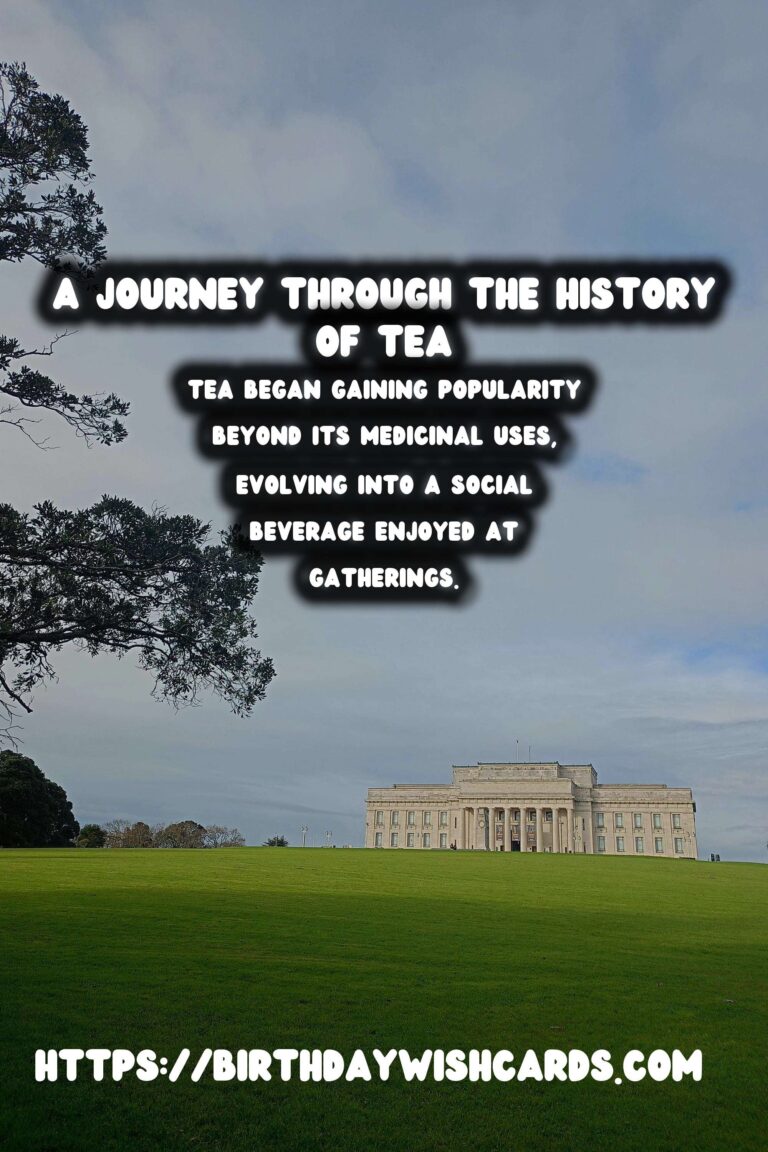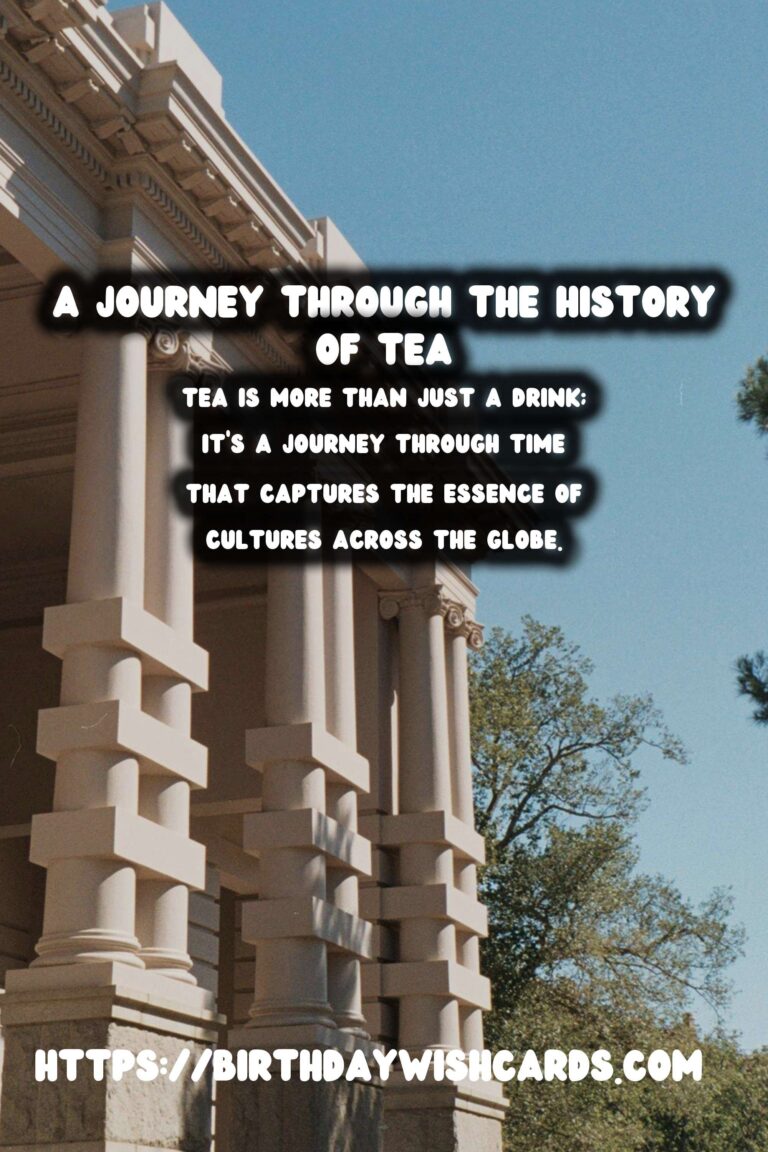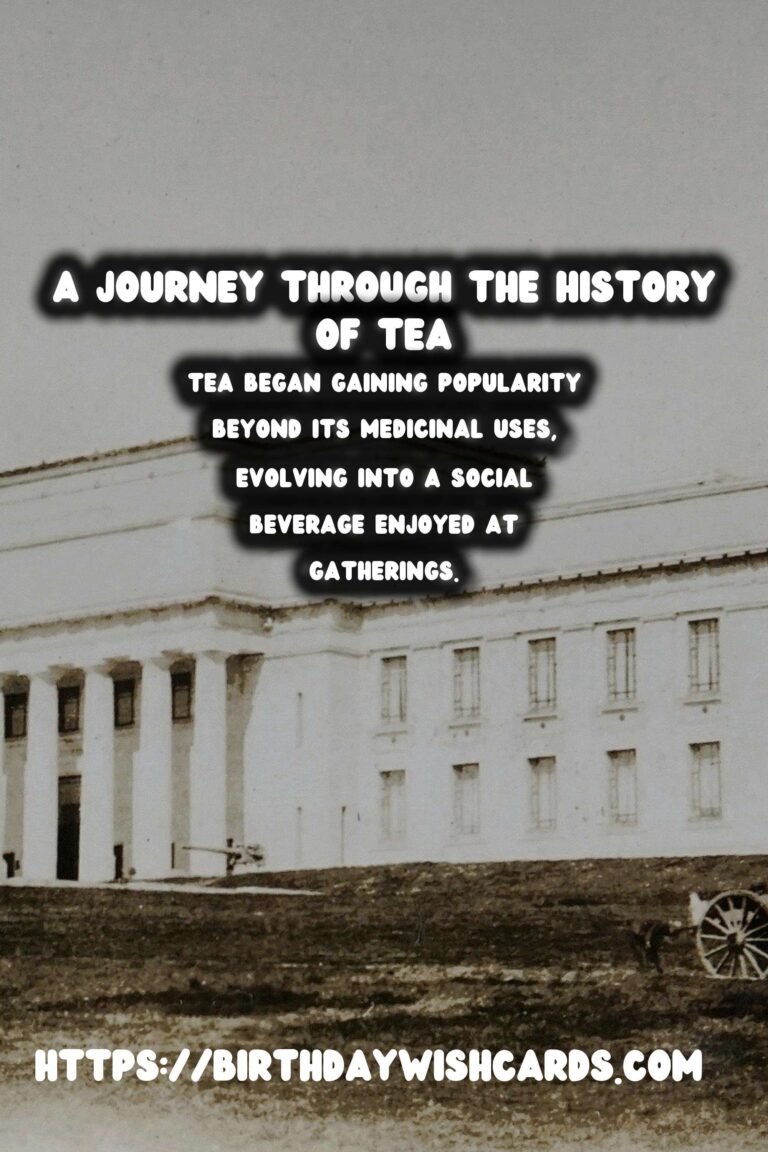
Tea is more than just a drink; it’s a journey through time that captures the essence of cultures across the globe. With roots embedded deep in ancient civilizations, the evolution of tea from a medicinal herb to one of the most consumed beverages in the world is a story worth exploring.
The Origins of Tea: A Medicinal Beginning
The history of tea dates back to ancient China around 2737 BCE. Legend has it that Emperor Shen Nong, known for his knowledge of agriculture and medicine, discovered tea when leaves from a wild tree drifted into his pot of boiling water. The emperor enjoyed the refreshing brew, and the natural remedy was recorded for its health benefits.
During its early years, tea was primarily used for medicinal purposes. It was believed to improve digestion, relieve flatulence, and lift spirits. Ancient texts also describe tea being used as an antidote for natural toxins, a notion that would reinforce its status as a vital component of traditional Chinese medicine.
Tea in the Tang Dynasty: From Medicine to Social Drink
The Tang Dynasty (618-907 CE) marked a turning point in the history of tea. Tea began gaining popularity beyond its medicinal uses, evolving into a social beverage enjoyed at gatherings. The first-ever monograph on tea, the ‘Chajing’ or ‘The Classic of Tea,’ was written by scholar Lu Yu during this period, providing a comprehensive study of tea cultivation and preparation.
Tea culture flourished, with tea-tasting becoming an art form. New methods of tea production and preparation developed, including techniques of steaming, rolling, and drying tea leaves to enhance flavor. Tea was now an integral part of daily life, symbolizing peace, reflection, and culture.
Expansion into Japan and the Tea Ceremony
As Buddhism spread from China to Japan, so did tea. During the 9th century, Japanese monks who had traveled to China brought tea seeds and knowledge back to Japan. Tea cultivation and its study were primarily confined to the monasteries until the 12th century, when it became popular among samurai and the nobility.
The Japanese tea ceremony, or ‘Chanoyu,’ was developed, turning tea drinking into a spiritual discipline centered on harmony, respect, purity, and tranquility. The ceremony is deeply ceremonial and embodies the Zen philosophies that influence Japanese culture to this day.
Tea’s Journey to the West
Tea made its way to Europe in the 16th century with Portuguese and Dutch traders being among the first to introduce it to the continent. By the 17th century, it became popular in Britain, initially as a luxury item. Catherine of Braganza, a Portuguese princess who married King Charles II, had a significant influence on popularizing tea drinking within British society.
The British East India Company capitalized on tea’s growing demand, leading to the establishment of tea gardens in Assam and Darjeeling, India. Tea became an essential part of the British way of life, giving rise to traditions such as afternoon tea, which still persists today.
The Globalization of Tea
In the modern era, tea has become one of the world’s most consumed beverages, second only to water. Its globalization is marked by an array of varieties and preparation methods, each reflecting the unique cultural elements of regions that embraced them. From English Breakfast to Japanese Matcha, the diversity is vast, highlighting tea’s ability to adapt and integrate globally.
With the rise of health consciousness, tea has been reaffirmed for its myriad health benefits, including antioxidant properties and its role in reducing stress and promoting wellness.
Conclusion: Tea as a Cultural Icon
The history of tea is a remarkable journey that showcases its transformation from a Chinese medicinal elixir to a global beverage cherished by billions. As an enduring symbol of hospitality and tradition, tea continues to unite people across diverse cultures, nourishing not just the body but the soul.
As we sip our modern-day concoctions, it is worth appreciating the rich tapestry of history woven by each leaf, reminding us of its influential role throughout the centuries.
Tea is more than just a drink; it’s a journey through time that captures the essence of cultures across the globe. Tea began gaining popularity beyond its medicinal uses, evolving into a social beverage enjoyed at gatherings. 









#TeaHistory #CulturalHeritage




